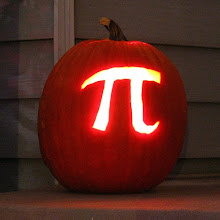Solar (or photovoltaic) cells convert the sun’s energy into electricity. Whether they’re adorning your calculator or orbiting our planet on satellites, they rely on the the photoelectric effect: the ability of matter to emit electrons when a light is shone on it.
Silicon is what is known as a semi-conductor, meaning that it shares some of the properties of metals and some of those of an electrical insulator, making it a key ingredient in solar cells. Let’s take a closer look at what happens when the sun shines onto a solar cell.
Sunlight is composed of miniscule particles called photons, which radiate from the sun. As these hit the silicon atoms of the solar cell, they transfer their energy to loose electrons, knocking them clean off the atoms. The photons could be compared to the white ball in a game of pool, which passes on its energy to the coloured balls it strikes.
Freeing up electrons is however only half the work of a solar cell: it then needs to herd these stray electrons into an electric current. This involves creating an electrical imbalance within the cell, which acts a bit like a slope down which the electrons will flow in the same direction.
Creating this imbalance is made possible by the internal organisation of silicon. Silicon atoms are arranged together in a tightly bound structure. By squeezing small quantities of other elements into this structure, two different types of silicon are created: n-type, which has spare electrons, and p-type, which is missing electrons, leaving ‘holes’ in their place.
When these two materials are placed side by side inside a solar cell, the n-type silicon’s spare electrons jump over to fill the gaps in the p-type silicon. This means that the n-type silicon becomes positively charged, and the p-type silicon is negatively charged, creating an electric field across the cell. Because silicon is a semi-conductor, it can act like an insulator, maintaining this imbalance.
Silicon is what is known as a semi-conductor, meaning that it shares some of the properties of metals and some of those of an electrical insulator, making it a key ingredient in solar cells. Let’s take a closer look at what happens when the sun shines onto a solar cell.
Sunlight is composed of miniscule particles called photons, which radiate from the sun. As these hit the silicon atoms of the solar cell, they transfer their energy to loose electrons, knocking them clean off the atoms. The photons could be compared to the white ball in a game of pool, which passes on its energy to the coloured balls it strikes.
Freeing up electrons is however only half the work of a solar cell: it then needs to herd these stray electrons into an electric current. This involves creating an electrical imbalance within the cell, which acts a bit like a slope down which the electrons will flow in the same direction.
Creating this imbalance is made possible by the internal organisation of silicon. Silicon atoms are arranged together in a tightly bound structure. By squeezing small quantities of other elements into this structure, two different types of silicon are created: n-type, which has spare electrons, and p-type, which is missing electrons, leaving ‘holes’ in their place.
When these two materials are placed side by side inside a solar cell, the n-type silicon’s spare electrons jump over to fill the gaps in the p-type silicon. This means that the n-type silicon becomes positively charged, and the p-type silicon is negatively charged, creating an electric field across the cell. Because silicon is a semi-conductor, it can act like an insulator, maintaining this imbalance.
As the photons smash the electrons off the silicon atoms, this field drives them along in an orderly manner, providing the electric current to power calculators, satellites and everything in between.

0 comments:
Post a Comment